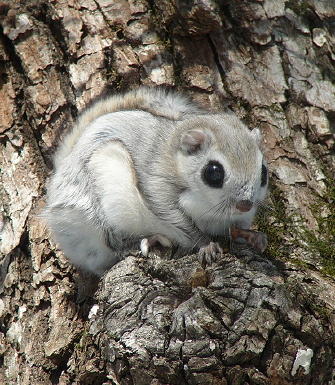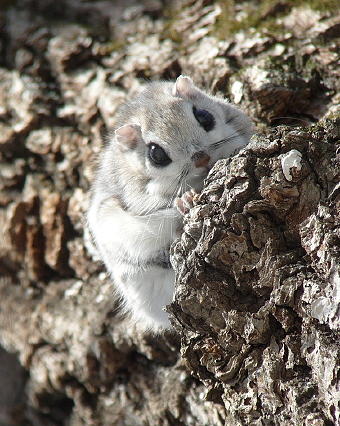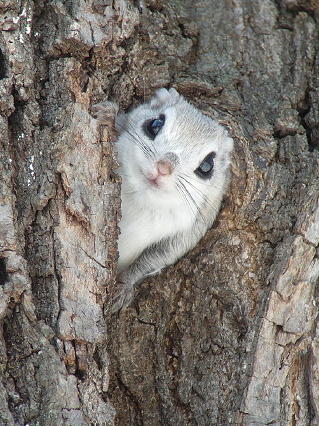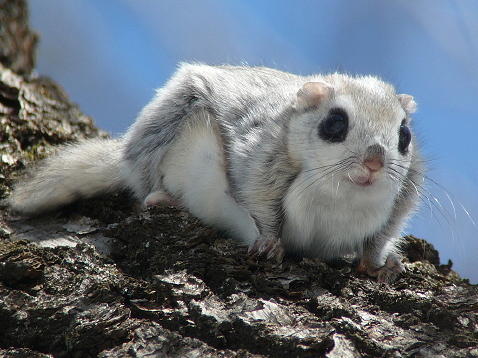Siberian Flying Squirrel Pteromys volans
 In Japan, the Siberian Flying Squirrel Pteromys volans occurs only in Hokkaido. In Honshu, to the south, it is replaced by the Japanese Flying Squirrel P. momonga.
In Japan, the Siberian Flying Squirrel Pteromys volans occurs only in Hokkaido. In Honshu, to the south, it is replaced by the Japanese Flying Squirrel P. momonga.
Although typically nocturnal, Siberian Flying Squirrel can sometimes be seen outside their dens during the day. They use natural tree cavities or old woodpecker holes in which to sleep during the day, typically using the holes of Great Spotted Woodpeckers.
 As dusk falls, they emerge from their dens and quickly climb up their tree trunk to reach the upper branches. They may feed there, or set off by gliding from tree to tree using the extensive patagial membrane that can be seen along their flanks. Stretched taut between outstretched limbs this membrane, combined with the flattened tail, gives them a large gliding surface, enabling them to travel considerable distances.
As dusk falls, they emerge from their dens and quickly climb up their tree trunk to reach the upper branches. They may feed there, or set off by gliding from tree to tree using the extensive patagial membrane that can be seen along their flanks. Stretched taut between outstretched limbs this membrane, combined with the flattened tail, gives them a large gliding surface, enabling them to travel considerable distances.
 Their enormous eyes are a clear indication of their nocturnal habits. But on a clear winter's day, the whole forest seems to be reflected in the limpid mirrors of the domed surface of their eyes. Waiting at dusk for these creatures to emerge is a magical experience.
Their enormous eyes are a clear indication of their nocturnal habits. But on a clear winter's day, the whole forest seems to be reflected in the limpid mirrors of the domed surface of their eyes. Waiting at dusk for these creatures to emerge is a magical experience.

